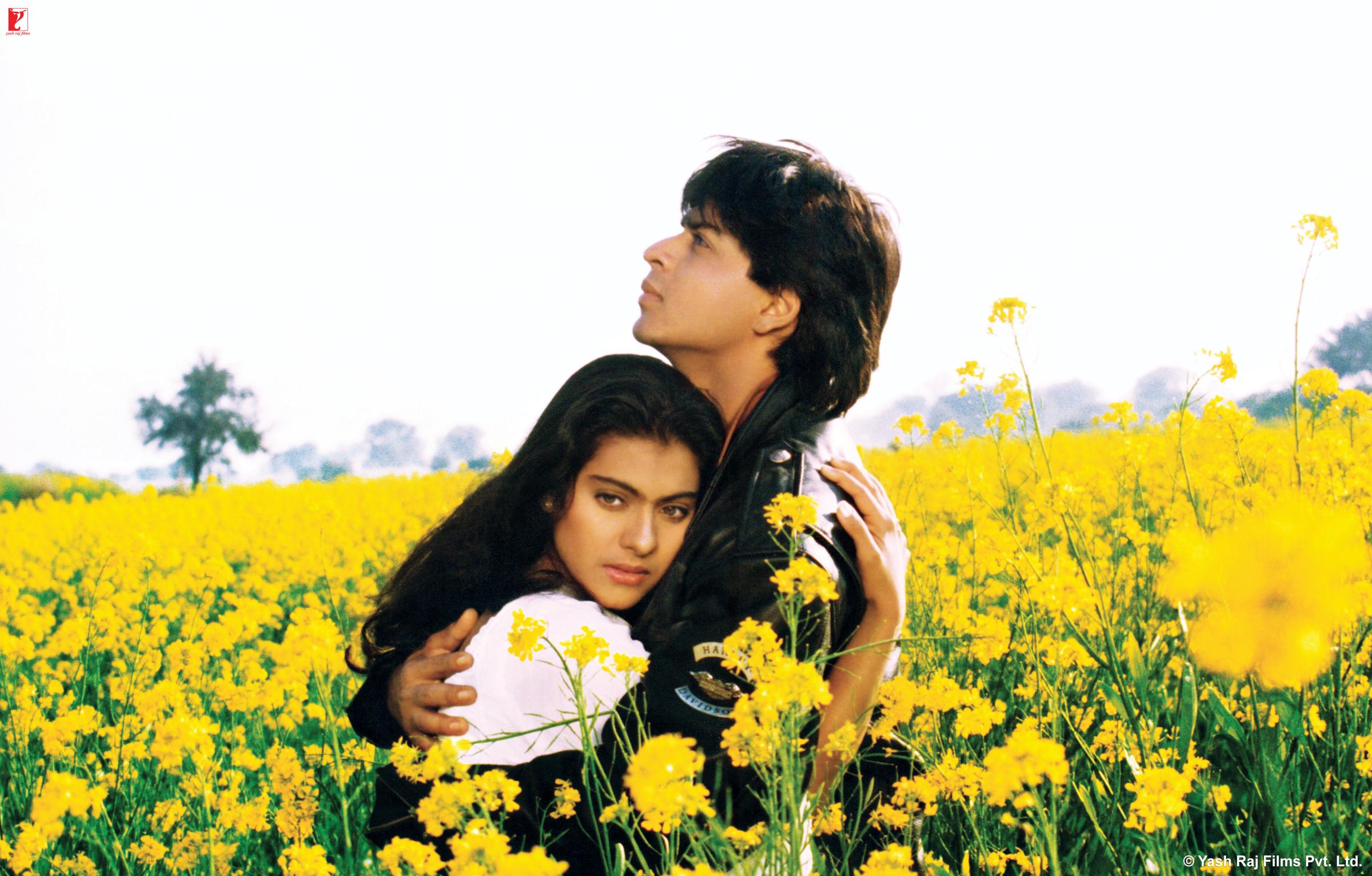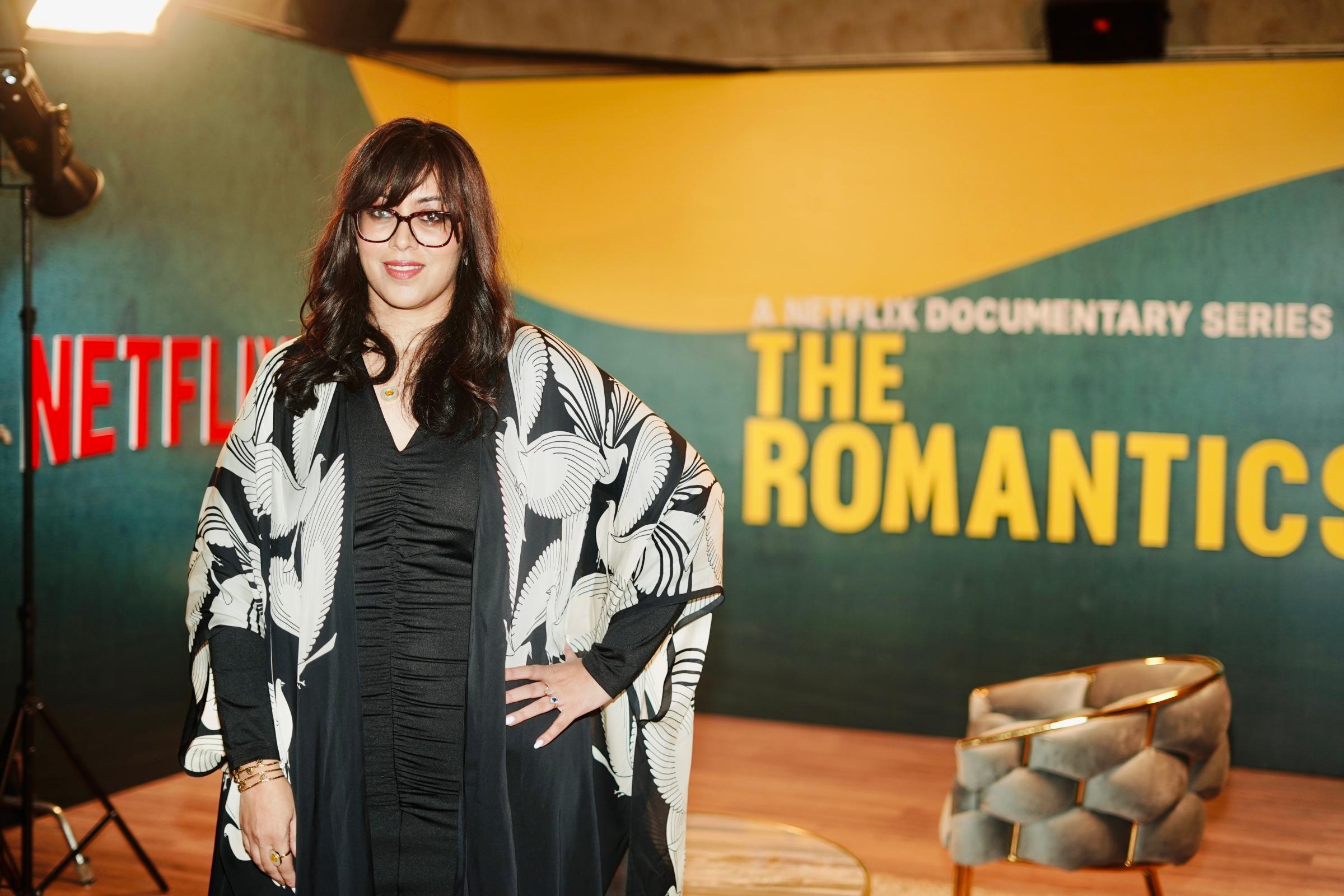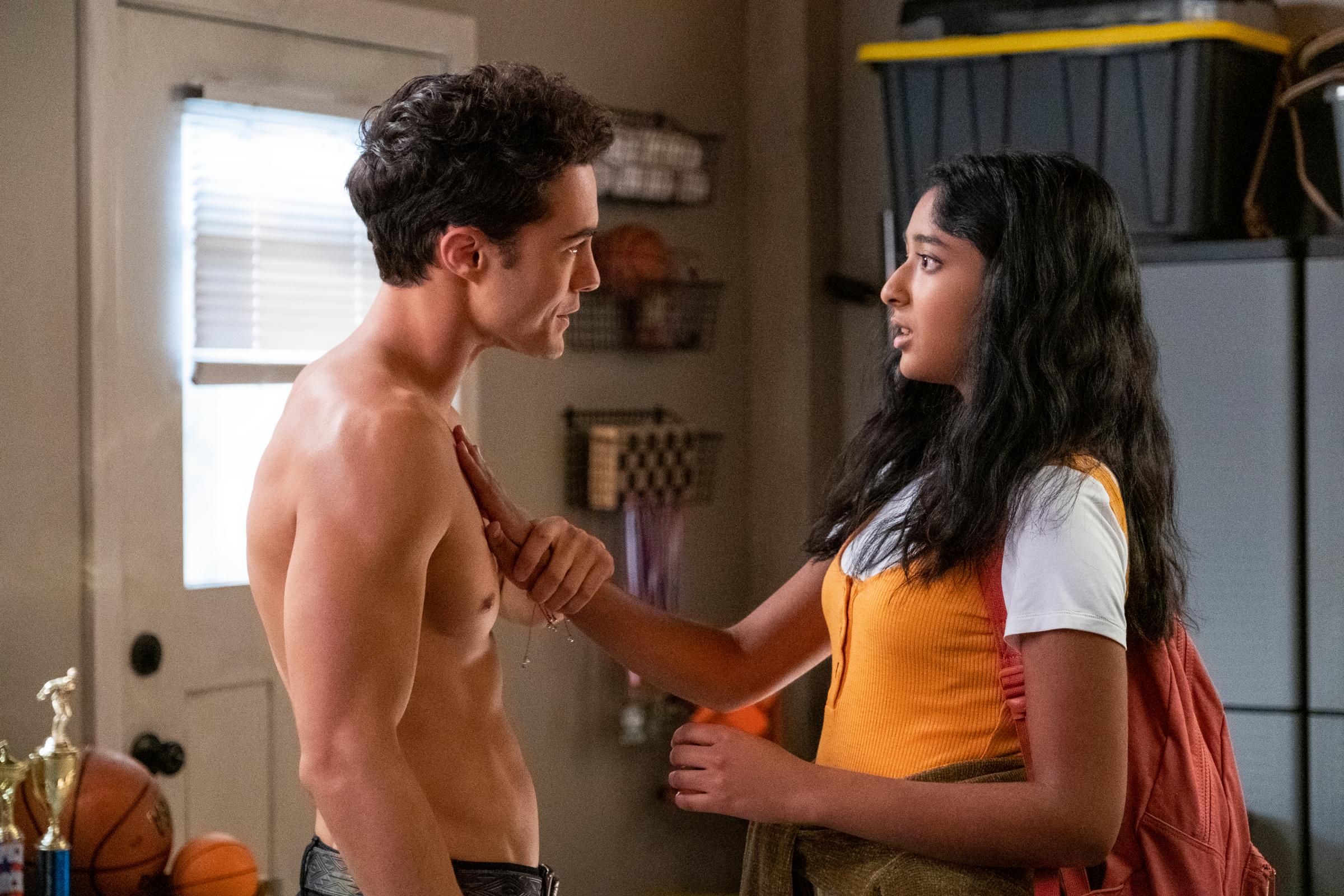Shortly after Yash Chopra’s 1976 romantic drama Kabhi Kabhie was released in India, the popular film made its way to a quaint family-run cinema in Culver City, Los Angeles. Thanks to the late filmmaker Jag Mundhra, the Meralta Theatre was the first cinema in Hollywood to screen Hindi-language movies, known by the catch-all term Bollywood.
Jag and his wife Chandra rented a screen at the theater to exhibit major Hindi releases to a growing audience of local South Asian diaspora communities. As its popularity grew, Mundhra would often invite Bollywood stars and esteemed industry guests to U.S. premiere screenings of the latest blockbusters, an offer Chopra graciously accepted that year.
Now—47 years on—Jag’s daughter Smriti Mundhra feels their family story has come back around; her four-part documentary The Romantics, an ode to Chopra’s extensive career and entertainment conglomerate Yash Raj Films, arrived on Netflix this Valentine’s Day.
Chopra is the filmmaker whose style best defined what we identify as Bollywood today—think autonomous heroines and poetic heroes serenading each other against beautiful landscapes, a chiffon dupatta blowing gently in the wind. The movie mogul is responsible for directing and producing over 40 of the most iconic Bollywood titles to date, and his production company has become a key distributor for films across the industry.
“Making this series is really a full circle moment for me in celebrating not only Yash Chopra and his legacy, but also paying tribute to my father as someone who also carried forward the cinema-going tradition,” Mundhra tells TIME. “The [Culver City] cinema was gone before I was born but it looms large in my imagination,” she adds. In 2019, Mundhra paid tribute to the theater by naming her production company, also responsible for Netflix’s hit reality show Indian Matchmaking, Meralta Films.
Despite her early reluctance to be pigeonholed as an Indian storyteller, Mundhra’s work has unapologetically centered around her community, whether that’s in a reality show, a sitcom, or a documentary. Much like Chopra, Mundhra is also drawn to romance in her work. “It’s a great litmus test for where we are as a culture,” she says of the genre. “That generational tension that emerges when you’re talking about marriage and romance… who to marry and who can’t marry. It’s ripe for drama.”
Giving Indian cinema the homage it deserves

The Romantics traces the history of Hindi language films with help from 35 of the industry’s most recognizable talents, many of whom arguably owe their careers to Chopra, including Amitabh Bachchan and his son Abhishek Bachchan, Shah Rukh Khan, Katrina Kaif, Rani Mukerji, Hrithik Roshan, and Ranveer Singh.
Viewers also hear from Chopra’s wife Pamela, and sons Uday, a sometime actor, and the elusive Aditya, who took over Yash Raj films two years before his father’s death in 2012, and hasn’t given an interview since 1995. Getting Aditya to speak on camera was notoriously difficult, according to Mundhra, but she knew that a film on his father’s legacy would be incomplete without him. “In so many ways, he carried the torch for his father,” she says.
Chopra hailed from a filmmaking family and after some early success working for his brother, he set out on his own path to found Yash Raj films in 1970. Going to the cinema was somewhat of a special occasion in the 1960s and 1970s and audiences typically wanted to save their money for big action movies. But Chopra’s pioneering, and sometimes risky, approach led viewers loyal to action movies into a new era of popular love stories such as Silsila (1981), Chandni (1989), Dilwale Dulhania Le Jayenge (1995), and Mohabbatein (2000).
“Indian cinema was such an integral part of my upbringing, but it’s also a huge part of world cinema history and we’ve seen lots of reverence paid to Japanese cinema, French cinema, Italian cinema, but we haven’t really gotten that sort of deep dive, contextual treatment of Indian cinema,” Mundhra says of her creative inception. She hopes the final product is a nostalgia trip for die-hard fans, and an accessible entry point for those curious about the billion dollar industry.
Read More: How Bollywood Rolled Over to Hindu Supremacists
Moving beyond “Bollywood”

The documentary also digs into the institutional and political issues that shaped the industry. We see actors unpack why Bollywood is an imperfect title despite its convenience as a shorthand. Shah Rukh Khan highlights that the term wasn’t inclusive of the rest of India outside of Bombay (now Mumbai), and doesn’t account for Bengali, Telugu, Tamil, and Malayalam cinema, which all form part of India’s vibrant film scene, with Telugu films now accounting for an even higher percentage of the industry than Bollywood. Additionally, the word places the industry in the shadow of Hollywood, implying it is derivative of a superior American industry. While Indian talent continue to use the word for convenience, they joke that they wouldn’t be caught saying it in front of Amitabh Bachchan, who particularly dislikes it.
The nostalgic series comes as present-day Hindi cinema is finding its way at the box office after a series of major flops. Many star-studded titles with large budgets fell short of expectations in 2022, including the Ranbir Kapoor-led Shamshera, which was produced by Yash Raj Films, Dhaakad starring Kangana Ranaut, and Cirkus, with Deepika Padukone and Ranveer Singh.
The industry’s prospects looked bleak as India—like many other countries—struggled to attract pre-pandemic audiences back to the theater despite operating without any COVID-19 restrictions. But things are starting to look up: Pathaan, Siddharth Anand’s action movie starring Shah Rukh Khan, topped $100 million at the global box office after its release on Jan. 27.
“These things are cyclical. We’ve had phases in [the past] where it felt like we were sort of losing our touch,” recalls Mundhra, “but it just takes one film to come along and break that mold and show people a new way.”
Once lauded for liberal storytelling and inclusive practices, Bollywood appears stagnant under an increasingly right-wing political landscape with Hindu nationalist sentiments, upheld by Prime Minister Narendra Modi and his Bharatiya Janata Party (B.J.P.). In 2017, for example, the release of Padmaavat was delayed after extremist groups took offense at the inclusion of a love scene between a Hindu queen from the Rajput caste, Padmavati (Deepika Padukone), and a Muslim sultan. The backlash resulted in threats to burn down any cinema that played the film and even calls from a B.J.P politician to behead Padukone. The movie was ultimately released the following year upon the approval of the Central Board of Film Certification, a state authority which can refuse to certify movies at its discretion, for arbitrary reasons that can range from threats to India’s national interests, bold portrayals of nudity, sexuality or provocation, or religious sentiments it deems harmful. A few changes were implemented to keep critics happy, including the addition of multiple disclaimers and a change from its original title Padmavati.
“We’re in a period of time where art and politics have unfortunately gotten intertwined in a way that leans more towards censorship than speaking truth to power,” Mundhra says of creative freedoms in India. Films are being censored by the government via the, the Central Board of Film Certification,. “But India was founded as an inclusive nation,” says Mundhra. “There was a time where the films reflected that and that time will come again.”
Representation across the diaspora

Bollywood was once the only form of representation for South Asians across the globe, as Canadian comedian and actor Lilly Singh laments during a cameo in The Romantics. Mundhra says including a diaspora voice like Singh’s was pivotal in showing that Indians are “in every corner of the world… but it’s the movies that connect us all and bring us all back home.”
Since then, audiences have enjoyed an increase in shows and films centered on South Asian identity, especially in the last 10 years. These include a wide range of projects, from the Oscar Best Picture-winning Slumdog Millionaire and The Big Sick, starring Kumail Nanjiani, on the big screen to TV series like Mindy Kaling’s Never Have I Ever (which Mundhra directed two episodes of), Mundhra’s own show Indian Matchmaking, Bridgerton, and Ms. Marvel, to name just a few more prominent titles.
While many lauded these stories as groundbreaking firsts, others felt they can sometimes fall short of expectations. Some critics have argued that Mindy Kaling tends to create and portray characters whose obsession with their white male counterparts is one-dimensional, while others took issue with the callous discussions around caste and colourism in Indian Matchmaking. Mundhra says that when you are “starved” of representation, you will rarely be satisfied with the few examples you have. While her work doesn’t exist to flatten Indian identity into a monolith, she hopes her body of work “is a step in the right direction” towards multitudes.
Indo-Western shows are also able to sidestep the tricky cultural challenges that Hindi language media is still shaped by, such as on-screen depictions of sex, and the prevalence of colorism within casting. South Asian colorism is widely regarded as a colonial hangover from the rule of the British Raj between 1858 and 1947, and in India specifically, it is also rooted in Hinduism’s caste system. Characters such as Devi Vishwakumar (played by Maitreyi Ramakrishnan in Never Have I Ever) and Kate Sharma (Simone Ashley in Bridgerton) were rare instances of dark-skinned Indian women claiming leading parts.
But Mundhra is hopeful that diverse characters will continue to be centered in Indian storytelling on screen, both in India and across the diaspora. “Audiences are hungry for it,” she says. “They do reward it when they see it—it just requires bravery.”
More Must-Reads from TIME
- Cybersecurity Experts Are Sounding the Alarm on DOGE
- Meet the 2025 Women of the Year
- The Harsh Truth About Disability Inclusion
- Why Do More Young Adults Have Cancer?
- Colman Domingo Leads With Radical Love
- How to Get Better at Doing Things Alone
- Michelle Zauner Stares Down the Darkness
Write to Armani Syed at armani.syed@time.com